Iran-EU Talks Discuss Nuclear Deal, Sanctions In Doha
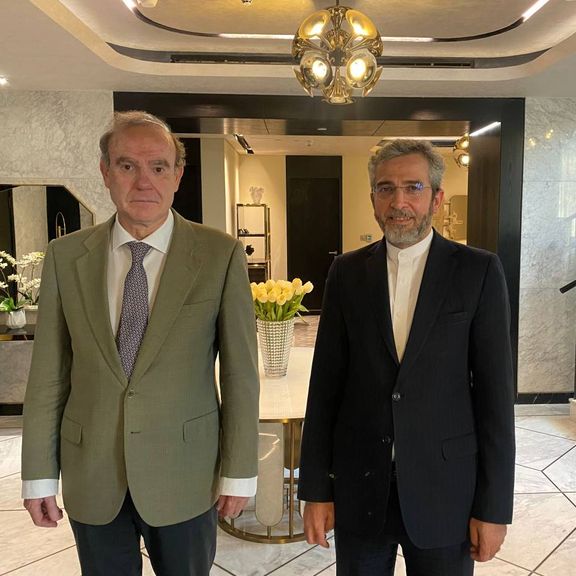
European Union foreign policy official Enrique Mora and Iran’s chief nuclear negotiator Ali Bagheri-Kani held meetings in Qatar.

European Union foreign policy official Enrique Mora and Iran’s chief nuclear negotiator Ali Bagheri-Kani held meetings in Qatar.
Bagheri-Kani confirmed his meeting in a tweet on Wednesday, claiming the two had a “serious and constructive” meeting.
“We exchanged views and discussed a range of issues including negotiations on sanctions lifting,” added the Iranian diplomat.
Mora also confirmed the negotiations saying they were on “a range of difficult bilateral, regional, and international issues, including the way forward on the JCPOA.”
Iran’s foreign minister Hossein Amir-Abdollahian arrived with a delegation possibly including Bagheri-Kani who is also deputy foreign minister in Doha Monday evening and held talks with Qatari officials on Tuesday, in what many believed to be related to issues pertaining to disputes with the United States.
In recent weeks there have been a flurry of reports about direct and indirect talks between Washington and Tehran on the nuclear issue, Americans held hostage in Iran and possibly Iran’s military cooperation with Russia.
Some reports suggest that the US intends to reach an unwritten interim nuclear deal, whereby it offers sanctions relief to Iran in exchange for a freeze on uranium enrichment at 60 percent.
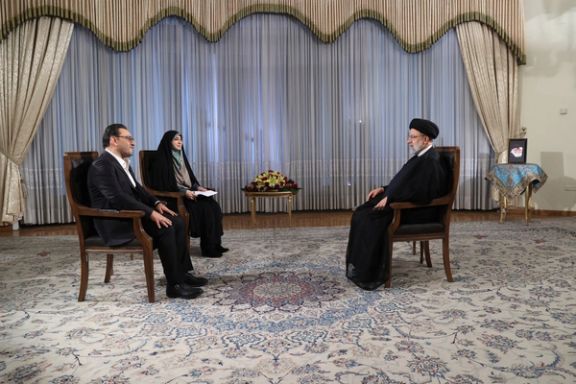
Enemies fomented protests in Iran to derail “progress” that his government was making, Iran’s president Ebrahim Raisi claimed in an interview with state television.
While sharp criticism about the deteriorating economy and “mismanagement” by Iran’s hardliner government has increased by both friends and foes, Raisi tried to present an acceptable picture of his performance by making claims and citing misleading or cherry-picked statistics.
The televised interview Tuesday evening was aired on the second anniversary of his win in the 2021 presidential vote that had none of the attributes of a competitive race. His most serious rivals were disqualified by the Guardian Council, a non-transparent body controlled by regime insiders loyal to Supreme Leader Ali Khamenei.
Raisi repeated the regime’s unsubstantiated claim, first made by Khamenei, that the nationwide ‘Women, Life Freedom’ movement was a conspiracy by enemies to derail the success of the regime.
“The esteemed leader of the revolution indeed correctly proclaimed that the basis of the riots was the fact that enemies felt the country was moving toward progress and hope was returning to the people,” Raisi said about Khamenei drawing the line and defining the cause of the protests.

Regime officials never use the word ‘protest’ when it is about Iran. All anti-government demonstrations are ‘riots’.
The head of the Revolutionary Guard intelligence organization, Mohammad Kazemi claimed this week that 20 foreign secret services were involved in planning and organizing the protests that began last September when a 22-year-old woman was killed in ‘hijab police’ custody.
Raisi even claimed that nuclear talks with the West came to a halt because of the protests, while these negotiations hit a snag in the end of August or early September 2022, weeks before the anti-government movement began and the extent of the violence against protesters was revealed.
The United States said many times in 2022 that the Islamic Republic had presented “extraneous” demandswhen the European Union mediators presented a compromise draft agreement in mid-2022.
The bloody government response to protests that eventually took more than 500 civilian lives did become part of the US reasons for not pursuing a return to the JCPOA nuclear deal, but the first signs from Washington emerged in October and had nothing to do with the initial impasse in negotiations.
Raisi also made a series of misleading statements on the economy, including a claim that inflation dropped during his presidency, while Tehran media in May reported an inflation rate close to 70 percent.
Worse of all what he ignored to mention was a devastating drop in the value of the currency, rial, since September 2022. The rial, which was trading at around 280,000 to the US dollar in mid-2022, dropped to as low as 550,000 in early May. It is now trading at around 490,000. In short, the rial’s value almost halved in less than a year, with an incalculable damaging impact on the inflation rate in the months to come.
But the president in his interview tried to blame the war in Ukraine, which did have an inflationary impact on global prices, but nowhere near 70-percent inflation.
Iranian observers are at a loss to explain extravagant and demonstrably false statements by officials. Is it ignorance of facts, rosy reporting by bureaucrats to senior politicians or an outright and deliberate attempt to justify their failures?
Raisi’s statements come against the backdrop of reports about direct and indirect talks with the United States to reach an unwritten deal so the Tehran can receive some badly needed foreign currency if Washington agrees to allow its frozen funds in Iraq and South Korea to be released.
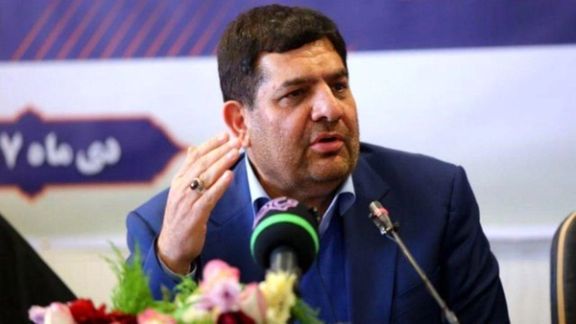
Iran’s vice president claims the country is planning to produce 20,000 megawatts of electricity using nuclear power.
Mohammad Mokhber said on Wednesday that the use of fossil fuel is losing its place and the importance of nuclear energy is doubling.
He also ordered the Minister of Energy and the Head of the Atomic Energy Organization (AEOI) to compile a plan for the construction of a 20,000-megawatt nuclear power plant and provide the necessary resources for the implementation of this plan in the next year’s budget.
Iranian Supreme Leader Ali Khamenei spoke to members of the country's nuclear industry on June 11, amid reports that Tehran and Washington were indirectly negotiating a nuclear deal via Oman.
In that meeting, he urged the AEOI to continue developing the nuclear program to reach the 20,000 megawatts of nuclear power goal.
His ambitions come as currently, the United States generates 95,492 megawatts of nuclear power, which is required to operate 93 reactors.
Iran has the second largest natural gas reserves in the world, holding more than 17 percent of global discovered gas fields.
Iran has done little to upgrade its energy industry since its peak a decade ago when its annual oil export revenue reached $100 billion. Unlike neighboring Qatar, Iran has seen a steady decline in its natural gas production due to a lack of technology to maintain output, meaning one of the world's largest gas fields is all but stagnant.
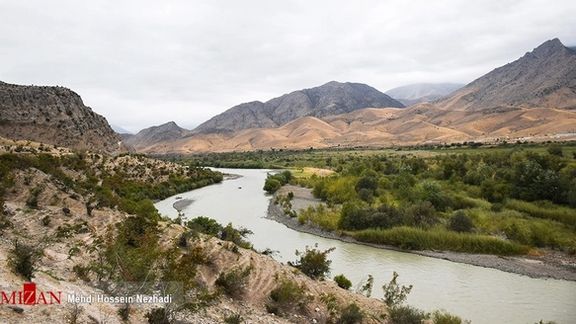
Media reports about possible radioactive contamination of Aras River in Iran’s northwestern borders by Armenia’s nuclear power plant has led to widespread concerns.
However, Iran's Nuclear Safety Center has refuted the reports. In a statement on Tuesday, the center which is an affiliate of Atomic Energy Organization of Iran (AEOI) said the river Aras is monitored at least once a year for radioactive pollution and that the last survey in March this year did not indicate any radioactive pollution as claimed by Payam-e Ma newspaper on Monday.
Quoting a paper published earlier by the Border Studies Research Journal of the Iranian police, Payam-e Ma on Monday suggested that the extremely high occurrence of various types of cancers and liver diseases in Ardabil Province bordering the Republic of Azerbaijan, could be attributed to radioactive pollution of the Aras River emanating from Armenia’s nuclear power plant situated in Metsamor hundreds of kilometers to the west.
Payam-e Ma’s article followed a warning on June 12 by Mahmoud Abbaszadeh-Meshkini, a member of the Iranian Parliament’s National Security and Foreign Policy Committee who claimed that effluent from the power plant which was polluting the river could be the cause of the high occurrence of cancer in Iran’s Ardabil.
However, the cause of the high rate of cancer in the area is hard to establish. It is not clear whether the phenomenon is related to the environment or has other underlying reasons. But concerns linger on as many do not trust the Iranian government on the issue of radioactive contamination.
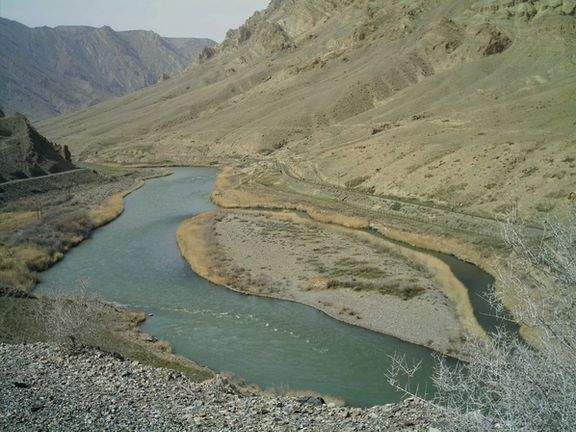
A deputy health minister, Dr. Reza Malekzadeh, told the media in October 2020 that a longitudinal study carried out over a period of 20 years about the occurrence of stomach cancer in Ardabil Province has shown a rate of 50 per 100,000 of the province’s population. This is the highest rate in the country.
However, the Nuclear Safety Center’s statement said the Armenian power plant is too far from the Aras for its effluent to reach the river and pollute it as claimed.
The Aras River which rises in Turkey forms part of Iran's border with its northwestern neighbors, Armenia and Azerbaijan, before flowing into the Kura River in Azerbaijan.
“The Aras River is being continually monitored for radioactivity and other required substances,” the statement said and added that the center will establish an online water monitoring station in the said area very soon to carry out tests.
In the past ten years, Iranian officials have repeatedly denied radioactive pollution of the Aras River by the Armenian nuclear plant.
Metsamor Nuclear Power Plant which is the only nuclear power plant in the South Caucasus was built in the 1970s. The two units of the plant provide a total of 815 MW of electricity and supplied approximately 40 percent of Armenia’s electricity in 2015.
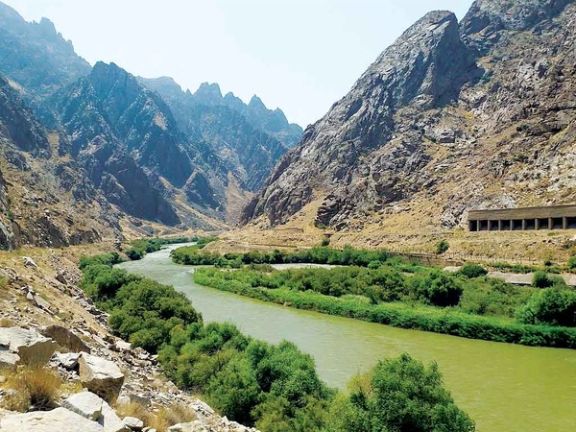
The plant has been a source of environmental concern since the Spitak Earthquake in 1988 which led to its closure until 1995. The plant has been classified by the EU as the oldest and least reliable of all the 66 reactors built by the former Soviet Union.
The International Atomic Energy Agency (IAEA), however, said in 2011 that the plant posed an “acceptable” level of risk to the environment and could “in principle” operate beyond its design life span.
The media have also warned that heavy metals in the effluent of other industries in Armenia, Turkey and Iran have been polluting the river for many years. Most of the pollution, however, is apparently caused by Armenian copper mines and plants in the area.
Firuz Ghasemzadeh, spokesman of the Iranian Water Industry, told the Iranian Labour News Agency (ILNA) on May 10 that the Iranian ministry of energy and both Iran’s and Armenia’s departments of environment had been investigating the pollution caused by the Armenian mines.
According to Ghasemzadeh, sources of pollution were eliminated by installation of water treatment facilities, but occasional pollution was still possible. He also stressed that Armenia has given assurances that it would control the sources of pollution.
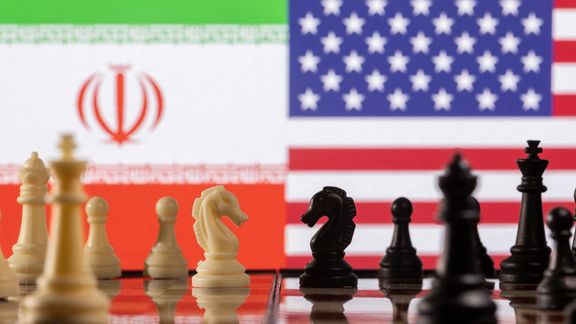
As diplomats weigh whether Iran’s nuclear expansion is angling for greater leverage at the negotiating table or part of a wider plan, recent talks raise questions.
The Financial Times reports that even if it is a negotiating tactic, the more advanced the program becomes, the more Tehran is expected to demand in return for reversing its gains.
That is why more media reports indicate a limited nuclear deal in the offing, with Iran to cap uranium enrichment at 60 percent while the United States gives some sanctions relief to Iran.
Henry Rome of the Washington Institute for Near East Policy told the newspaper: “As they [Iran] accumulate more and more chips on the nuclear side, yes they could give some away, but it also moves them closer to what has arguably been the long-term goal — to be recognized as a nuclear threshold state.”
As Iran gets closer to its goals, pushing evermore the boundaries of agreed terms, the chances of a reverse look increasingly unlikely. “Once you’re there, it might be tough to argue to give that up,” Rome added.
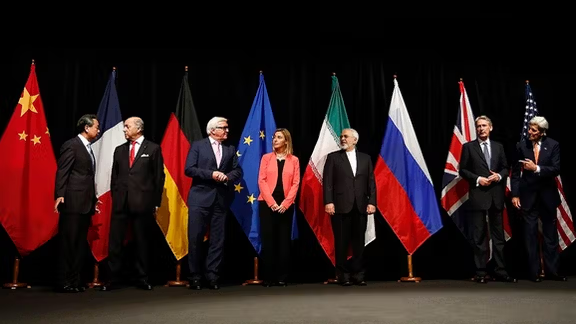
Time is ticking with October approaching, the time when the nuclear deal, or JCPOA clauses that impose sanctions on Iran’s ballistic missile program expire. While the likes of the E3 (UK, France, Germany) and US scramble to makes things right, Iran shows no signs of abating.
The regime continues to sell weapons to Russia even after months of denial. New revelations reported by Israel’s ALMA research center show that it is a complex operation with no end in sight.
The Biden administration is trying its best to calm the situation, not least with the chances of a Trump return in 2024 -- or yet still, another Iran hawk - don’t look as unrealistic as many would hope.
Whether that be another destabilizing factor or a deterrent to Iran is yet to be seen as the regime becomes ever more emboldened in the wake of diplomatic victories such as its recent detente with Saudi Arabia.
Speaking to the Financial Times, Hossein Mousavian, a former senior Iranian official now at Princeton University, warns that if there is no deal there would be an escalation with Iran enriching at 90 percent, the west triggering snapback UN sanctions and Tehran suspending its membership of the Treaty of Non-Proliferation of Nuclear Weapons.
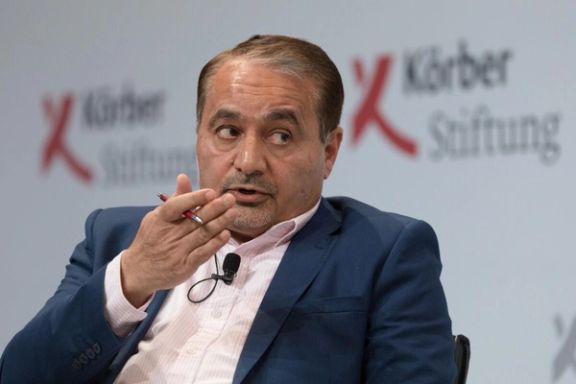
He somehow believes Iran is ready to revive the JCPOA, or reach a deal in which Tehran reduces tensions and the US turns a blind eye to oil and petrochemical exports.
Though hard to believe given the extent of sanctions, Mousavian claims Iran expected to be set to benefit from a Russian war with Ukraine as oil and gas supplies became scarce. Hoping that would help secure a better deal, that, he says, led Iran to reject draft proposals last August.
What few analysts seem to be sufficiently aware of is Iran's worsening economic crisis, with inflation reaching 70 percent and the currency, rial, losing half its value in the past year. While Iran might be trying to use its nuclear escalation option, the United States has its foot on the regime's financial lifeline.
Moving forward, Mousavian seems to think as long as Khamenei is in power, the regime will not seek to develop a weapon. Its actions say otherwise. “If there’s a Trump school of thought, then everything would be terminated; plan A, plan B, the JCPOA, [everything] but coercion or war,” Mousavian says. “The response would be: go for nuclear to reach a deal.”
If the ageing supreme leader, now 84, were to be no more, “nobody knows what could happen after”, he said.
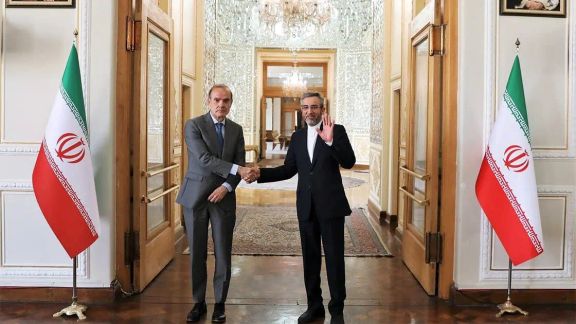
European Union foreign policy official Enrique Mora and Iran’s chief nuclear negotiator Ali Bagheri-Kani are holding meetings in Qatar, an Austria-based journalist reported.
Stephanie Liechtenstein who has been following the Iran nuclear negotiations tweeted Tuesday that according to her sources Mora and Bagheri-Kani met Tuesday and will also meet on Wednesday.
She said that “talks are focused mainly on Iran’s military support for Russia’s war against Ukraine as well as on the nuclear file and detainees.”
Iran’s foreign minister Hossein Amir-Abdollahian arrived with a delegation possibly including Bagheri-Kani who is also deputy foreign minister in Doha Monday evening and held talks with Qatari officials on Tuesday, in what many believed to be related to issues pertaining to disputes with the United States.
“I am told the meeting is another attempt to help ease tensions,” Lichtenstein said, as the multilateral nuclear talks ended last September when Tehran put forth conditions unacceptable for Washington.
Since September, the US has demanded an end to Iran’s weapons supplies to Russia that has included hundreds of Kamikaze drones used against Ukrainian military and civilian targets.
In recent weeks there have been a flurry of reports about direct and indirect talks between Washington and Tehran on the nuclear issue, Americans held hostage in Iran and possibly Iran’s military cooperation with Russia. Some reports suggest that the US intends to reach a an unwritten interim nuclear deal, whereby it offers sanctions relief to Iran in exchange for a freeze on uranium enrichment at 60 percent.